Click the exhibit button.
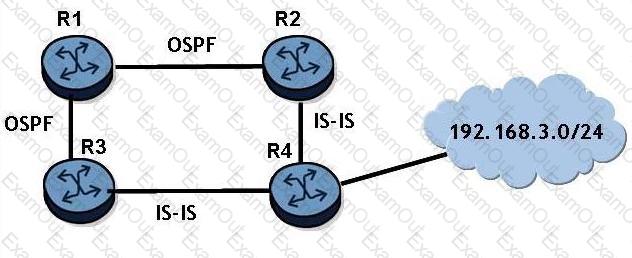
If router R2 redistributes the IS-IS route to 192.168.3.0/24 into OSPF, router R3 will receive two routes to 192.168.3.0/24. What will be the preference of these two routes? Assume that all IS-IS routers are L1/L2 capable and are in the same area. Choose two answers.
During node protection signaling, the PLR knows the address of the MP from which of the following methods?
Click on the exhibit.

What triggers convergence of the routing protocol when the link between switch 1 and switch 2 goes down?
Which of the following route types must be manually configured and will not re-route traffic when a link failure occurs in its path?
Click on the exhibit.
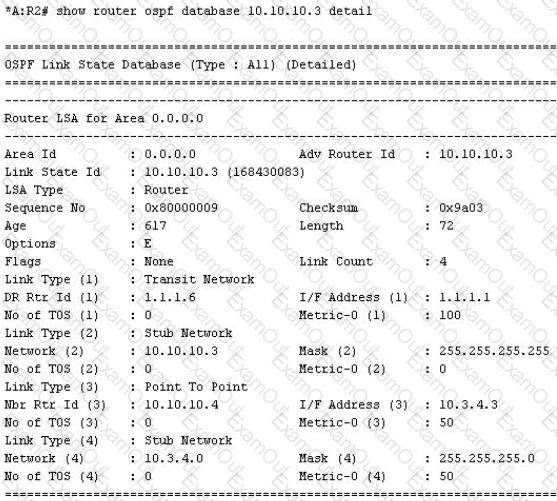
Given the contents of the Router LSA, which of the following best describes the local topology of the router?
Click on the exhibit.

Router R4 is being added to the network and it is connected to a non-OSPF domain.
Which area type should be used for Area 1 to allow the external routes to be advertised into Area 0?
Click on the exhibit.
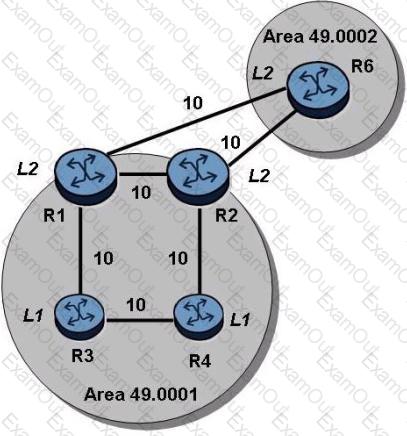
Examine the physical topology of the IS-IS network, the metrics of the links and the levels of the routers. All routers have a system address included in IS-IS.
Which of the following describes the route that router R4 will use to reach the system address of router R6?
Click on the exhibit.
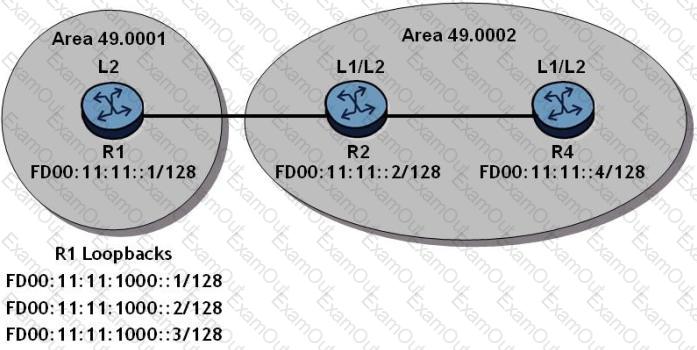
Router R1 distributes its globally routed address and its loopbacks into IS-IS. Routers R2 and R4 have their globally routed addresses in IS-IS.
How many routes will router R4 have in its IPv6 route table?
Click on the exhibit button below.
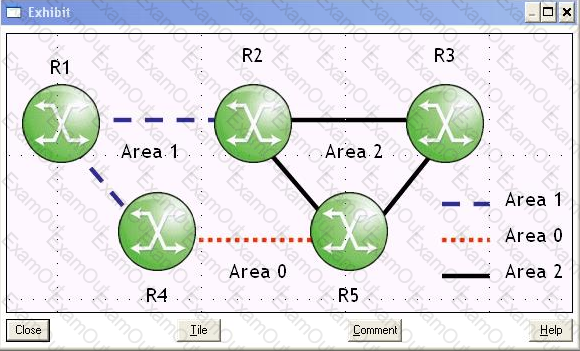
Consider the following:
Routers R1 and R4 are in Area 1.
Routers R4 and R5 in Area 0.
Routers R5 and R3 are in Area 2.
To support LDP-over-RSVP tunnels between routers R1 and R3 over path R1-R4-R5-R3, with which routers will router R5 require targeted sessions? (Choose two)
Which of the following statements regarding per-platform label space are true? Choose two answers.
The following are statements about fields in the Hello packet that must match in order to form an OSPF adjacency. Which statement is correct?
Which of the following are top level TLV types defined for OSPF-TE? Choose two answers.
Which of the following best describes how the path-mlu is chosen for an SDP?
Two directly connected routers set different interface Hello timeout values. Router R1 uses 15 seconds, while router R2 uses 30 seconds. Which of the following best describes the LDP adjacency?
Which of the following statements is FALSE regarding 6VPE?
Click on the exhibit.
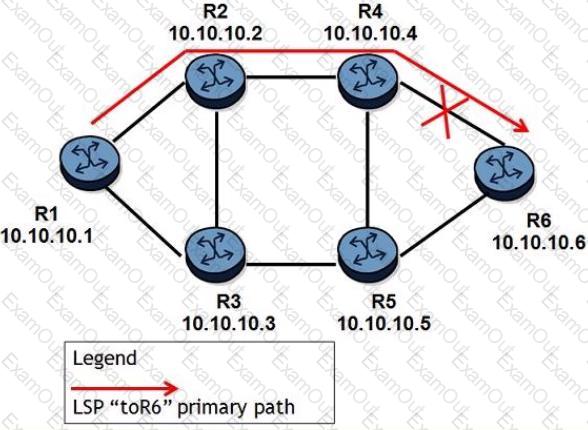
An LSP path is established on router R1 toward router R6. After router R4 detects that the link between routers R4 and R6 goes down, which of the following will affect the failure propagation time?
Which of the following is NOT required to configure an Alcatel-Lucent 7750 SR as a PE router running 6PE?
Which of the following about LDP-over-RSVP is TRUE?
What action does a router perform when it looks up the label of an incoming packet in its LFIB and sees that the LFIB maps to an egress label of 3?
Which of the following about T-LDP is FALSE?

